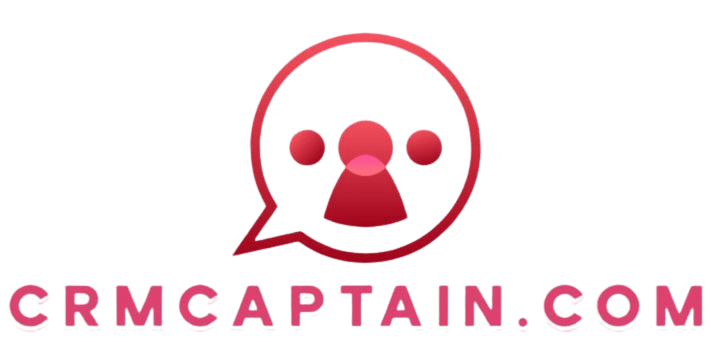“How to Build a CRM User Feedback Loop”
In today’s fast-paced business landscape, understanding your customers is more essential than ever. User feedback within your Customer Relationship Management (CRM) system, a tool that helps businesses manage customer interactions and data, isn t merely a luxury; it s a crucial element that can propel growth and elevate customer satisfaction.
Let s explore why user feedback is your secret weapon for growth! This article outlines the steps to establish an effective feedback loop and presents practical methods for collecting, analyzing, and implementing changes based on the insights you gather.
By measuring success and fostering continuous improvement, your CRM system can transform into a formidable tool for cultivating enduring customer relationships. Dive in to uncover how you can master the art of feedback!
Contents
- Key Takeaways:
- The Importance of User Feedback in CRM
- Creating a Feedback Loop in CRM
- Collecting User Feedback
- Analyzing and Utilizing Feedback
- Implementing Changes Based on Feedback
- Measuring the Success of the Feedback Loop
- Continuous Improvement through Feedback
- Frequently Asked Questions
- What is a CRM user feedback loop?
- Why is building a CRM user feedback loop crucial for your success?
- What are the steps to building a CRM user feedback loop?
- What are some effective ways to collect feedback from CRM users?
- How can businesses ensure the feedback loop is successful?
- Are there any tools or software that can help with building a CRM user feedback loop?
Key Takeaways:

User feedback is crucial for the success of any CRM system. It provides valuable insights and helps improve customer satisfaction and retention. Building a feedback loop involves creating a systematic process for collecting, analyzing, and utilizing user feedback. To effectively utilize feedback, businesses should prioritize and implement changes based on the most impactful suggestions and continuously improve their CRM system based on ongoing feedback.
The Importance of User Feedback in CRM
User feedback is essential for your CRM efforts. It offers valuable insights into customer needs, preferences, and expectations, ultimately driving business growth and enhancing loyalty.
Take a cue from innovative companies such as Blackberry and Yahoo! They ve understood that prioritizing customer feedback allows them to refine product development strategies and cultivate stronger relationships with their clientele.
In today s fast-paced market, grasping user experiences can profoundly impact the effectiveness of your CRM strategy.
Understanding the Value of Feedback
Understanding the value of feedback is crucial for any business that aims to enhance user experience and align offerings with customer expectations. By gathering and analyzing customer insights through various feedback mechanisms, you can uncover critical trends that inform your product development strategies.
This proactive approach nurtures customer success and leads to higher satisfaction as you become more attuned to user behavior. Through consistent evaluations of customer sentiment, you must make informed decisions that resonate with your audience, ensuring your products evolve in line with market demands and user preferences.
Ultimately, leveraging feedback effectively transforms customer interactions into meaningful dialogue, paving the way for lasting loyalty.
Creating a Feedback Loop in CRM
Establishing a feedback loop in your CRM is crucial for continuously gathering, analyzing, and acting on customer input. This not only propels product development but also significantly enhances customer satisfaction.
Steps for Building a Feedback Loop
Building a feedback loop involves several key steps that ensure you collect effective feedback and engage meaningfully with your customers:
- Identify the best methods for gathering customer input, such as surveys, interviews, or social media interactions, all tailored to resonate with your audience’s preferences.
- Analyze the collected data effectively; utilize analytics tools or customer segmentation strategies to uncover actionable insights.
- Boost response rates by offering incentives for participation or streamlining the feedback process to make it user-friendly.
- Encourage ongoing communication that demonstrates to your customers that their opinions truly matter, cultivating loyalty and trust in your brand.
Each of these elements plays a crucial role in developing a robust customer-driven feedback mechanism.
Collecting User Feedback

Collecting user feedback is essential for understanding customer needs and preferences. By doing so, you enable your business to refine its offerings, ensuring they resonate deeply with your audience and maximize user engagement.
Methods for Gathering Feedback
There are numerous methods for gathering feedback, each presenting unique advantages in capturing user insights.
Among these, customer satisfaction surveys reign supreme as a direct means to gauge user sentiment. This allows you to pinpoint trends and identify areas for improvement.
A/B testing offers a hands-on approach, enabling you to compare different versions of a product or service and see what resonates with your audience in real time.
Innovative Customer Relationship Management (CRM) solutions integrate data from multiple touchpoints, giving you a comprehensive view of customer preferences and behaviors.
By leveraging these diverse sources, you can deepen your understanding of what drives customer loyalty and satisfaction, ultimately crafting more personalized experiences that leave a lasting impression.
Analyzing and Utilizing Feedback
By analyzing and utilizing feedback effectively, you can transform raw data into actionable insights that propel product improvements and elevate customer retention.
Effective Strategies for Utilizing Feedback
To harness feedback effectively, implement strategic approaches that align with your feedback goals and customer engagement initiatives.
This alignment helps you connect better with your users and ensures that the feedback you receive is relevant and actionable.
By analyzing customer preferences and behaviors, you can uncover trends and emerging needs, allowing you to adapt your offerings quickly.
Integrating user insights into your product development enables you to tailor features that truly resonate with your audience, ultimately enhancing user satisfaction.
When feedback mechanisms are seamlessly woven into the customer journey, you foster a continuous dialogue that transforms users into active contributors, enabling them to shape their product experience.
Implementing Changes Based on Feedback
Implementing changes based on user feedback is essential for cultivating a customer-centric approach that prioritizes product enhancements and customer success.
By actively listening to your audience, you not only refine your offerings but also show a commitment to their needs and experiences.
This proactive strategy lays the groundwork for sustained growth and satisfaction, ultimately elevating the overall value you provide.
Best Practices for Implementing Changes

When implementing changes based on feedback, it’s crucial to take a systematic approach that honors customer expectations and promotes user-driven development. This method enhances the overall user experience and strengthens the bond between your business and its customers.
By actively seeking input and integrating it into your product testing, you can align your offerings more effectively with market demands. Establishing a continuous feedback loop is key, as it allows you to make ongoing improvements that respond to user needs.
Prioritizing clear communication about how feedback shapes your products is essential. This transparency fosters trust and loyalty among users, making them feel valued and boosting user satisfaction and retention.
Measuring the Success of the Feedback Loop
Measuring the success of a feedback loop is essential for understanding its influence on customer satisfaction and loyalty.
By focusing on specific key metrics, you can gain valuable insights into how effectively your efforts resonate with your audience. This understanding enhances your strategies and cultivates deeper connections with your customers.
Key Metrics to Track
Key metrics to track in your feedback loop include response rates, customer retention rates, and user engagement levels. Each offers valuable insights for your organization.
Monitoring these metrics is essential, as they directly reflect how effectively you adapt to customer needs and enhance the overall experience.
For instance, high response rates suggest that your customers feel valued and eager to engage in conversation. Similarly, strong retention rates generally indicate satisfaction with your products or services.
User engagement levels act as a barometer for ongoing interest and loyalty, significantly impacting your revenue generation.
Together, these indicators illuminate the effectiveness of your feedback loop, enabling you to refine your strategies and align your offerings with consumer expectations.
Don’t miss out on the chance to connect with your users! Start implementing feedback systems today.
Continuous Improvement through Feedback
Continuous improvement through feedback is a strategic approach that enables you to align your products and services with the ever-evolving expectations and needs of your customers.
Embracing this mindset not only enriches your offerings but also strengthens your connection with your audience. This ensures you remain relevant in an increasingly competitive landscape.
How to Continuously Improve with Feedback
To enhance your offerings through feedback, it’s essential to establish strong customer feedback systems that analyze user behavior and help with timely product updates.
These systems do more than just collect insights; they interpret the data to identify patterns in how customers engage with your products and services. By integrating diverse feedback channels, such as surveys, social media comments, and direct communication, you can cultivate a comprehensive view of user sentiments.
This deeper understanding is vital. It enables you to respond proactively to customer needs and strengthens those important relationships.
Regularly analyzing this feedback nurtures an agile approach to product development. This ensures that your adjustments align with the ever-evolving market demands.
Frequently Asked Questions

What is a CRM user feedback loop?
A CRM user feedback loop (Customer Relationship Management) is a continuous process of collecting and incorporating feedback from customers into the development and improvement of a CRM system. It allows businesses to gather insights and make data-driven decisions to enhance user experience.
Why is building a CRM user feedback loop crucial for your success?
Building a CRM user feedback loop is crucial for your success because it helps businesses understand their customers’ needs and preferences. This allows them to make necessary changes and improvements to their CRM system, leading to better customer satisfaction and retention.
What are the steps to building a CRM user feedback loop?
- Identify the purpose and goals of the feedback loop.
- Determine the target audience for feedback.
- Choose the appropriate feedback methods (surveys, interviews, etc.).
- Collect and analyze feedback data.
- Implement changes based on the feedback received.
- Continuously monitor and adjust the feedback loop as needed.
What are some effective ways to collect feedback from CRM users?
- Surveys: This allows for quantitative data collection and can be easily distributed to a large number of users.
- Interviews: This allows for more in-depth and qualitative feedback gathering.
- Customer feedback forums: These online platforms provide a space for customers to share their thoughts and ideas.
- Feedback forms within the CRM system: This allows for immediate feedback while the user is interacting with the system.
How can businesses ensure the feedback loop is successful?
- Clearly communicate the purpose and importance of the feedback loop to customers.
- Actively listen to and consider all feedback received.
- Regularly analyze and incorporate feedback into the CRM system.
- Communicate and show customers how their feedback has led to improvements in the system.
- Continuously monitor and adapt the feedback loop as needed.
Are there any tools or software that can help with building a CRM user feedback loop?
Yes, various tools and software can assist with building a CRM user feedback loop. Some popular ones include SurveyMonkey, Typeform, and Qualtrics for surveys, and HubSpot or Salesforce for CRM system data analysis and management.
In conclusion, implementing a CRM user feedback loop can significantly enhance your business’s ability to meet customer needs. Start building your feedback loop today!






